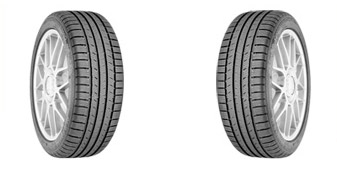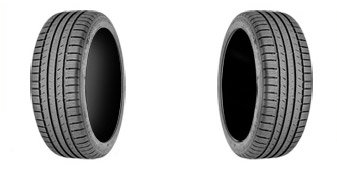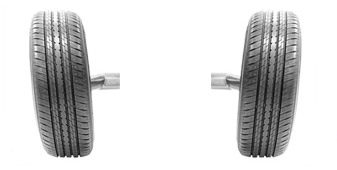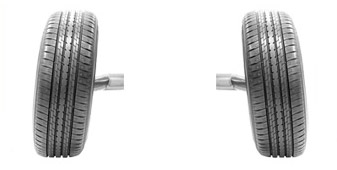Why Wheel Alignment Is Important
Making sure that your vehicle’s wheels are properly aligned is extremely important. It ensures that your car or van is performing safely and efficiently, keeping you safe when you’re behind the wheel.
If your wheels become misaligned, you may start to experience problems while you’re driving. Wheel misalignment can affect your vehicle in different ways. For example, the most obvious problem is that your vehicle may start pulling to the left or right, even if your steering wheel is straight.
There are many reasons why you should ensure that your wheels are correctly aligned to the manufacturer’s recommendations, including:
Improved Handling
Misaligned wheels can cause poor handling, and you may feel that the vehicle pulls to either the left or the right. Rectifying this issue will ensure that your vehicle’s handling is as efficient as it should be.
Reduced Tyre Wear
Wheels that aren’t correctly aligned will cause your tyres to wear down more quickly and unevenly. This is because the tyres aren’t making direct contact with the road at the correct angle. Making sure your wheels are properly aligned will reduce tyre wear and make them last longer.
Better Fuel Efficiency
Making sure that your wheels are properly aligned means that rolling resistance is significantly reduced, which results in better fuel efficiency for you.
Safer Driving
Misaligned tyres can cause steering problems, so by correcting this issue, you’ll be able to remain in control of the vehicle and drive safely.
Better For The Environment
Since correctly aligned wheels improve fuel economy, accurate wheel alignment reduces the carbon emissions of your car, making it better for the environment too.
A More Comfortable Ride
Correct wheel alignment will improve your driving experience as you won’t have to fight against a steering wheel that is pulling in a certain direction, providing you with a smooth, comfortable ride every time.
Understanding Wheel Alignment
The truth is, this concept is fairly technical. To help you get to grips with this process so you can better understand the importance of wheel alignment, we’ve provided simple explanations of the most common terms.


Toe
The term ‘toe’ refers to the angle of each wheel in relation to the vehicle’s centre line - this is an invisible line which travels down the centre of the vehicle if you were to view it from above.
To understand this, think of a set of wheels as your feet. If you were to bring your toes in and your heels out - this is referred to as ‘toe-in’. If you were to move your toes outwards and bring your heels in, this is known as ‘toe-out’. Both toe-in and toe-out can cause your tyres to wear excessively, so it’s important to get this just right.


Camber
Camber refers to the amount of ‘tilt’ of the wheel. When the top part of the wheel is leaning away from the vehicle, this is known as ‘positive camber’ while ‘negative camber’ refers to when the wheel tilts in at the top. The camber of a wheel is not always noticeable to the eye, but if it’s not quite right, it can cause excessive tyre wear and make the vehicle pull to one side or the other.
Cross Camber
Cross camber refers to the camber from one side of the vehicle to the other. The amount of tilt doesn’t have to be much and it’s not always obvious, but it can be enough to cause excessive tyre wear. It can also make the car pull to one side.
Caster
To understand caster, imagine you’re looking at a bicycle sideways on and picture a line from the middle of the handlebars to the forks and down to the ground - this indicates the ‘pivot point’. On a car, this would be known as the suspension strut. Next, visualise another vertical line from the centre of the wheel - where this reaches the ground represents the ‘tyre contact point’.
The angle created is referred to as the caster angle. If this angle is not quite right, stability will be reduced, so it’s vital that the caster is set to the correct angle to ensure better control of the vehicle.
Thrust Angle
Thrust angle refers to the direction of the back wheels in relation to the vehicle’s invisible centre line. If the thrust angle is not quite right, there’s a good chance that the vehicle will move sideways from the rear.
Wheel Alignment At Tyre Pros
At Tyre Pros, we use the latest wheel alignment equipment from leading vehicle specialists Hunter to ensure we are able to obtain the most accurate results possible. Our Hunter Hawkeye wheel alignment equipment uses a series of precise lasers to measure 14 different angles. This allows our technicians to establish even the slightest alignment issue.Once we have completed your wheel alignment check, we will provide you with a before and after report. This will outline the details of your car or van’s alignment values.To book your wheel alignment check, start by using the link below to find your nearest Tyre Pros centre.
Talk To The Tyre Pros
“Wheel alignment is important for both safety and comfort. If you’re unsure whether your wheels are correctly aligned, talk to the Tyre Pros.”
